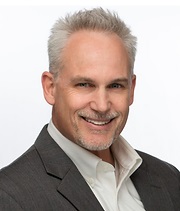As the solar industry continues its rapid growth, asset owners and operators face increasing challenges in maintaining and optimizing the performance of distributed portfolios. In recent webinar, experts from Wattch and Omnidian shed light on how data-driven strategies and advanced analytics are revolutionizing solar operations and maintenance (O&M). These insights are further supported by a comprehensive study from the National Renewable Energy Laboratory (NREL) on availability and performance loss factors for U.S. PV fleet systems.
The scale of the challenge
With the U.S. installing approximately 35 gigawatts of solar in 2023, the industry is grappling with a vast and growing fleet of assets that require ongoing care. Alex Nussey, co-founder and CEO of Wattch, highlighted the shift in focus: “For so long in the industry, there’s been so much focus on the leading edge of the growth curve, trying to get new assets on roofs and in the ground. But as these portfolios continue to grow and, importantly, start to age, O&M efficiency is becoming a lot more important.”
Additionally, the heterogeneity of these assets increases the complexity of managing distributed portfolios . “Not only are all of these assets geographically physically distributed, they’re also spread across various types of hardware and configurations . None of them are the same,” Nussey explained. This diversity in equipment, age, and location presents unique challenges for standardized O&M approaches. Operators need the ability to normalize data from multiple sources across their fleets to effectively surface, diagnose, prioritize, and address performance issues. .
From reactive to proactive: The power of data
Traditional O&M strategies often relied on reacting to fault codes or visible issues. However, this approach can either lead to unnecessary truck rolls or missed opportunities to correct subtle but significant performance issues. The webinar experts emphasized the importance of shifting to a data-driven, proactive model.
Trish Graf, VP of sales and strategic partnerships at Omnidian, outlined the potential impact: “The industry benchmark for truck rolls per megawatt is six truck rolls per megawatt over 12 to 48 months. We were able to reduce that by over two-thirds.”
This reduction is achieved through advanced analytics that can differentiate between critical issues that require immediate attention and less urgent issues that can be addressed during routine maintenance. “It’s less about remote diagnostics,” Graf explained, “and more about which problems really warrant a truck roll.”
System availability and performance
A recent NREL report, Availability and Performance Loss Factors for U.S. PV Fleet Systems, provides valuable insights into system availability and performance across a large fleet of PV systems. After analyzing data from 1,128 systems, researchers found that the median (P50) system availability was 0.991, with a lower 10th percentile (P90) value of 0.947. This means that half of the systems were available 99.1% of the time or more, while 90% of systems were available at least 94.7% of the time.
Performance index and degradation
The NREL study also examined the Performance Index (PI) of PV systems, which compares actual energy production to expected production based on weather conditions. After filtering out effects like snow and initial startup losses, the median system PI was found to be 0.95, indicating that the typical system produces about 95% of its expected energy.
System degradation is another critical factor in long-term performance. The NREL report compared multiple analysis methods and found that the median annual degradation rate ranged from -0.5% to -0.75% per year, depending on the methodology used. This is consistent with industry expectations but highlights the importance of accurate degradation modeling in financial projections.
Soiling impact
The NREL study provided new insights into soiling losses across different regions. Using the Combined Degradation and Soiling (CODS) analysis method, researchers analyzed 255 locations and found that annualized soiling losses typically range from 0-15%, with a median loss in the range of 2-3%. This data has been incorporated into an updated NREL soiling map, offering valuable information for system designers and operators.
The role of AI and machine learning
At the heart of modern data-driven O&M approaches are sophisticated platforms that leverage artificial intelligence (AI) and machine learning. Wattch’s platform, for instance, creates a “digital twin” of each solar asset, allowing for real-time comparison between actual and expected performance. By surfacing device-level and string-level expected voltage and current in addition to site-wide production, it helps operators understand and pinpoint areas of performance deviation to identify subcritical failures that might not be obvious to those looking at the data.
“We’re constantly watching every 10 seconds as data flows in from each site,” Nussey said. “We’re looking at that data and reassessing whether or not the site is still healthy, and if it is not, we can create an alert.”
This constant monitoring allows for early detection of issues, often before they significantly impact performance. Moreover, it enables more precise diagnosis, ensuring that when technicians are dispatched, they arrive with the right equipment and knowledge to resolve the issue efficiently.
Looking ahead
As the solar industry continues to mature, the role of data-driven O&M is set to grow. The experts predicted a future where predictive maintenance becomes the norm, where AI can forecast potential issues before they occur, and where O&M strategies are tailored to maximize financial performance rather than just technical metrics.
For asset owners and operators, embracing these data-driven approaches isn’t just about keeping up with technology—it’s about ensuring the long-term viability and profitability of their solar investments. As the industry scales up to meet ambitious clean energy goals, efficient, data-driven O&M will be crucial in maintaining the health and performance of the growing global solar fleet.

Tim Montague leads the Clean Power Consulting Group and is host of the Clean Power Hour podcast. He is a solar project developer, cleantech executive coach and consultant, mastermind group leader, entrepreneur and technology enthusiast.
The views and opinions expressed in this article are the author’s own, and do not necessarily reflect those held by pv magazine.
This content is protected by copyright and may not be reused. If you want to cooperate with us and would like to reuse some of our content, please contact: editors@pv-magazine.com.








By submitting this form you agree to pv magazine using your data for the purposes of publishing your comment.
Your personal data will only be disclosed or otherwise transmitted to third parties for the purposes of spam filtering or if this is necessary for technical maintenance of the website. Any other transfer to third parties will not take place unless this is justified on the basis of applicable data protection regulations or if pv magazine is legally obliged to do so.
You may revoke this consent at any time with effect for the future, in which case your personal data will be deleted immediately. Otherwise, your data will be deleted if pv magazine has processed your request or the purpose of data storage is fulfilled.
Further information on data privacy can be found in our Data Protection Policy.